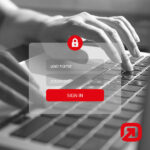“Smart Workspace“, “Free Seating“ and Industry 4.0 are terms that signalize that work environments are changing, common office concepts have to transform and the vision of the office of the future has become quite real. Many companies already react to those new trends and work on the modern workplace for knowledge workers. Lufthansa, Adidas, BMW, Deutsche Bank, Siemens and ADAC already have put their concepts into practice. The latest office of the future has been created by Microsoft.
WORKPLACE OPTIMIZATION AT MICROSOFT: FROM FIXED WORKPLACES TO FREE SEATING
Microsoft has recently opened one of the most modern German offices in Munich. The company adapts major trends such as collaboration, creative linkage, interdisciplinary team work and “Hot Desking” (no offices or assigned seating). In 1998 respectively 2014 the company has introduced trust-based working hours and the freedom to choose the place of work. Now, only one third of all employees is present at the office every day. The rest of the team works at home or makes customer visits. This offers lots of freedom and possibilities to both parties: The employees can work at their preferred place. Microsoft saves office space and enhances productivity through special room concepts and collaboration tools.
The most important innovative structural modifications are four working areas which are built to fit different requirements. There are no fixed workplaces anymore; everybody chooses their perfect place to work depending on the tasks of the day (free or hot seating). Whether it’s focused work, creative brainstorming or creating presentations with team members: There are working zones especially created for each purpose.
INDOOR POSITIONING AND TOOLS FOR THE MODERN OFFICE
Modern workplace concepts need some technical features to run smoothly. Many of those features rely on the possibilities of indoor positioning.
One example is the “BuddyFinder” feature, which infsoft has created for Vodafone’s “Campus Düsseldorf” app. It allows colleagues to find each other via indoor positioning. Additionally, indoor tracking technology allows measuring occupancies of areas. This way, it is possible to reveal potential for optimization quickly.
Booking meeting rooms via app is a very popular feature of the app. Rooms which are already occupied are sorted out and alternatives are presented. Visitor and invitation management is also very sought-after in large office buildings. Visitors will automatically be sent push notifications to their smartphones when entering the building. Besides a friendly welcome message, the notification can contain turn-by-turn-directions leading to the office of the inviting person (indoor navigation). The inviting person will receive a message telling him that his guest has just arrived.
Besides that, it is also possible to realize security applications, which can for example help find people in the case of emergency.
WHERE CAN I FIND WHAT? ASSET TRACKING AND INVENTORY
Besides position determination of people, asset tracking is an interesting option for large office buildings. Each asset, for example furniture, computers, technical devices and vehicles is equipped with a small BLE tag and can be located via a web interface at any time. This way, not only inventory becomes easier, it also helps preventing thievery.
INDOOR POSITIONING IS AN IMPORTANT COMPONENT
All of the examples listed above show that modern office concepts only work efficiently when they are supported by appropriate technology. Indoor positioning plays a major role here: Being able to determine the position of people and things facilitates communication, work flows and the management of company property. It gives everyone more time for the actual work, colleagues and guests.







